Hems shouldn’t be noticed. At least, not at first glance. I don’t want the stitching of the hem to detract from the overall handwoven quality. Decorative items, like this table runner, deserve a hand-stitched hem. But for functional pieces, like these tea towels, I stitch the hems on my trusty old Bernina sewing machine. This ensures the durability I want for something that will be thrown in the washer and dryer again and again.
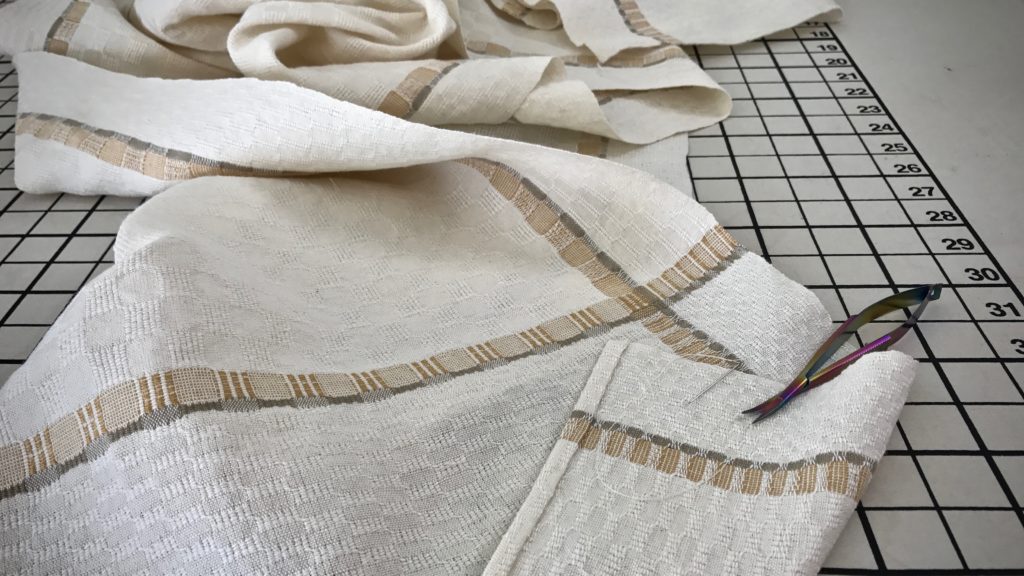
Last year I purchased a Bernina walking foot through my local Bernina repairman. It was one of the best sewing investments I have made. (Don’t be fooled by off-brand “Bernina compatible” products.) The advantage of a walking foot is that it evenly feeds layers of fabric, which is especially useful for sewing handwoven fabric. And for the towel hem, it means the top of the hem won’t become skewed and slanted as you sew, like it might with a regular sewing machine foot.
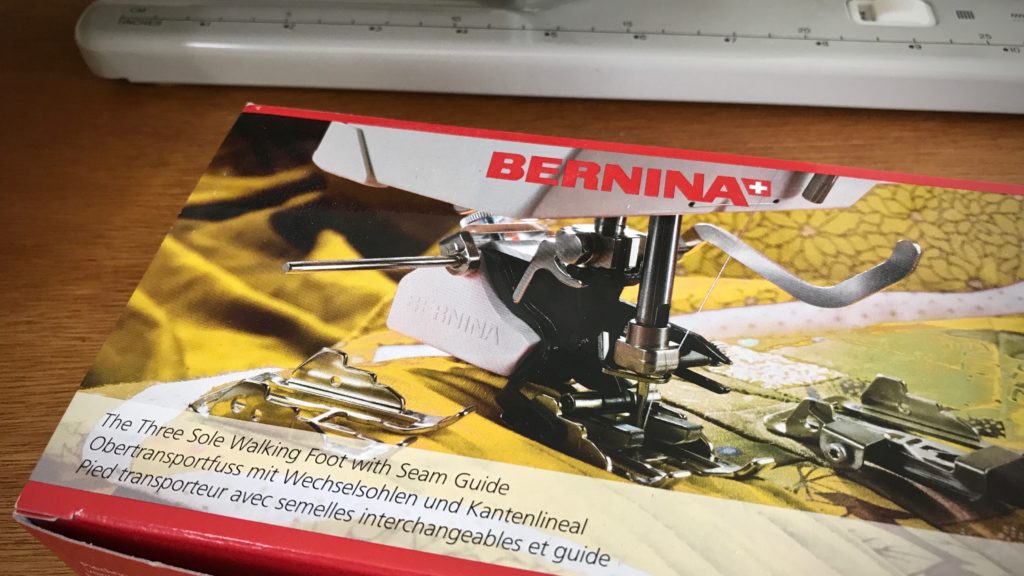
One of the three sole plates that comes with the Bernina walking foot is a sole for edge stitching. This works beautifully for stitching a narrow hem on lighter-weight fabric, like these airy cotton and linen towels.
My process for a machine-stitched narrow hem
- Turn and press the 1/4″ hem twice. Hold the folded edge in place with small fabric clips.
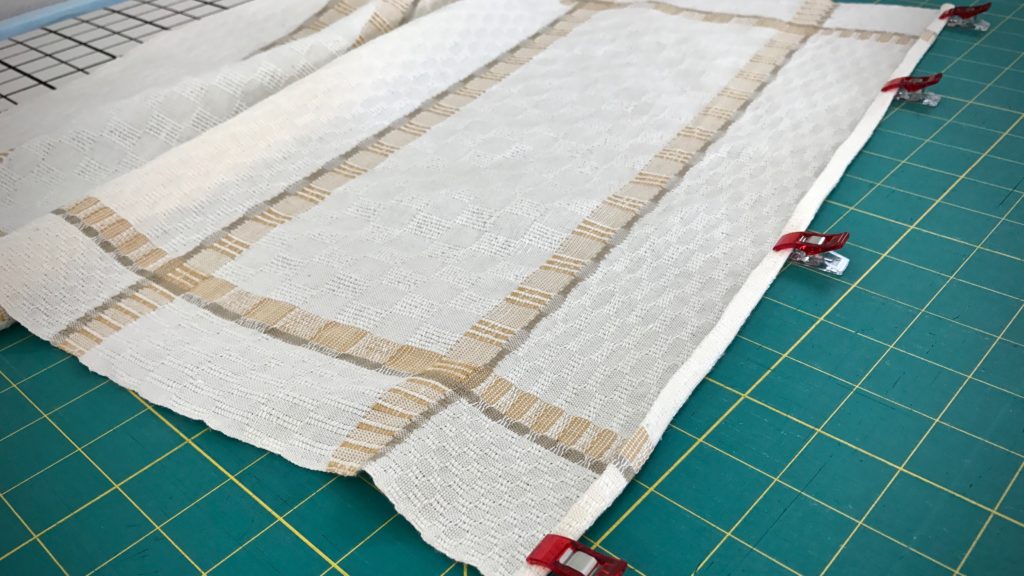
- At the sewing machine, attach the edge-stitching sole plate to the walking foot. Align the fold of the hem with the edge-stitching guide.
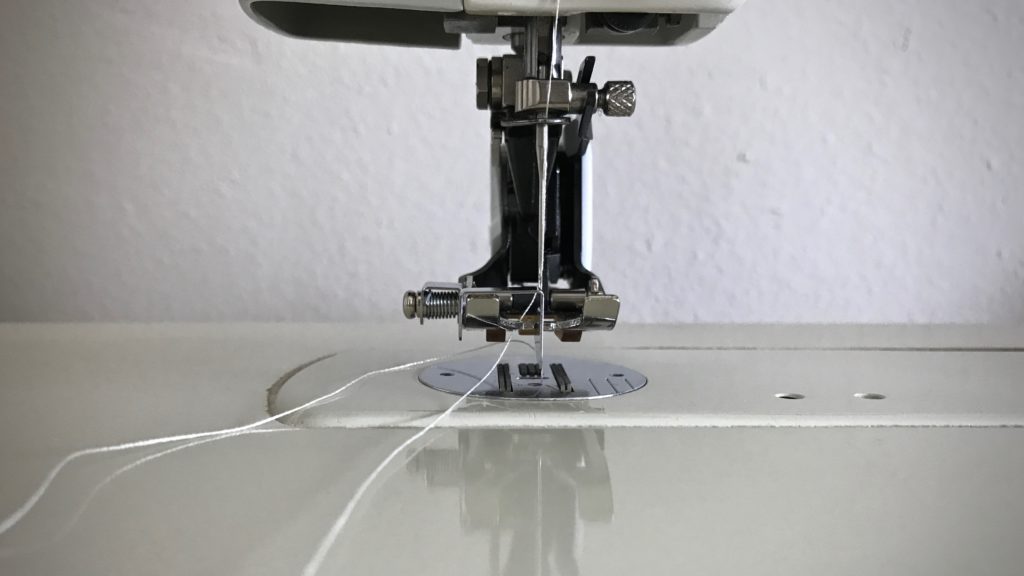
- Adjust the sewing machine needle to the right, so that it catches the fabric just inside the edge of the fold.
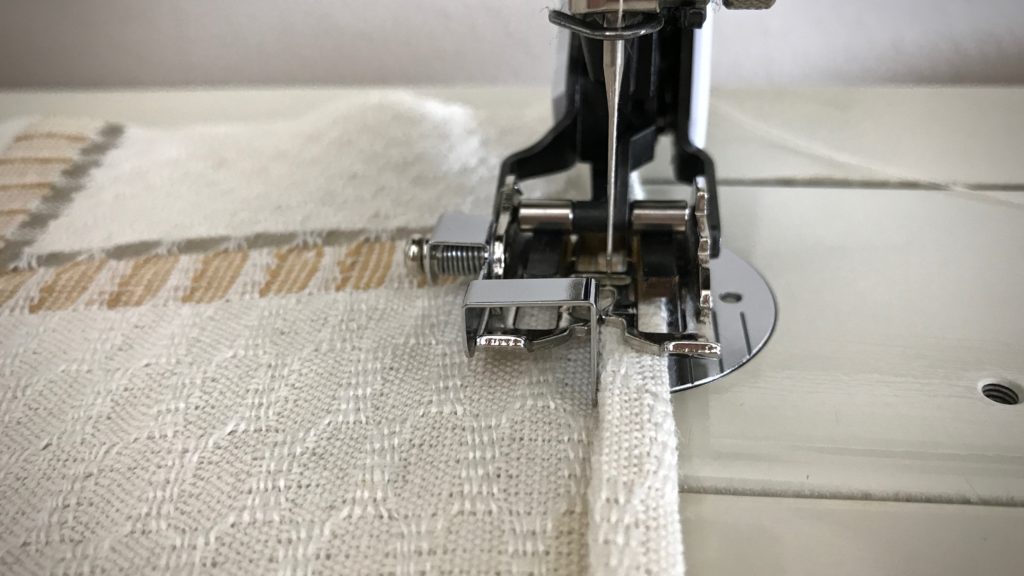
Slowly sew a narrow hem, keeping the folded edge next to the walking foot’s edge-stitching guide. Remove fabric clips before they come to the needle.
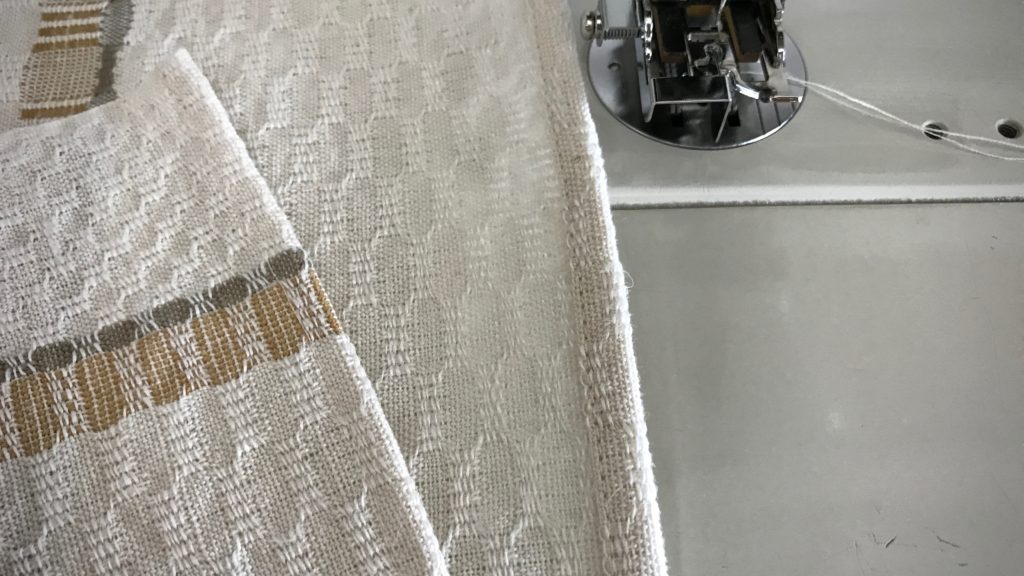
May your hems be a suitable frame for your handiwork.
Finishing,
Karen

I’m going to have to visit a Bernina dealer soon and get one of these for my machine. I really love that little stitch guide! Brilliant!
Hi Cate, Every little tool helps!
All the best,
Karen
Really pretty project! I inherited a Bernina last Summer but I have yet to play. My Elna sits in a cabinet making the sewing surface larger and at a much better level. I need a cabinet (and more floor space) for the Bernina. Sewing with my arms raised above cabinet height causes me too much shoulder/neck pain. Any suggestions would be welcome, Karen. The walking foot lives on the Elna most of the time.
Hi Beth, It’s not worth it to get shoulder/neck pain! I have never had a sewing machine cabinet, but my Bernina sits on a small lower-height table that Steve made for me eons ago. Table and chair height make a huge difference. Maybe you can find a lower table or an adjustable chair that you can raise to sit a little higher. I use an adjustable swivel desk chair at mine.
I’ve always heard that an Elna is a great machine. So maybe just stick with that. 🙂 (but I do love my trusty old Bernina…ha)
Happy pain-free sewing,
Karen
The M’s and O’s fabric turned out beautifully, just like all your weaving. I’m a Bernina gal, too.
Hi D’Anne, I’m very happy with the way the M’s and O’s turned out! I got started with Bernina many years ago. It’s the only sewing machine I’ve owned. I don’t think it will ever wear out.
Karen
I too recently invested in a walking foot and what a difference it makes in my hems.j I no longer dread this part of finishing. Do you like those hem clips better than straight pinning.? Where do you find the clips?
Hi Mary, I do prefer the fabric clips over pins for simple stitching like this. It’s quick and easy, and there is no distortion of the fabric. Also, there is no threat of snagging the fabric with a rough pin. Of course, I do use straight pins for sewing that requires more detail.
I got my clips at Hobby Lobby, but I think you can find them at most places that have quilting supplies.
Karen
What size machine needle do you use for your handwovens?
I am experiencing some pulled threads, and wonder if it’s the needle, or the
8/2 cotton I/m weaving with?
Thanks, suzy
Hi Suzy,
The 8/2 cotton shouldn’t make a difference at all. I use a size 70 or 80 machine needle, depending on the weight of the fabric. A finer needle for finer fabric. For very delicate fabric, sometimes I put in a ballpoint needle.
The size of the needle probably doesn’t make that big a difference. If I had to guess, though, I would guess that your needle needed to be replaced. Sewing machine needles can get little nicks and burrs on them, even after just a little bit of use, and that can cause pulled threads. I often put in a new sewing machine needle before I start sewing on handwoven fabric.
Karen